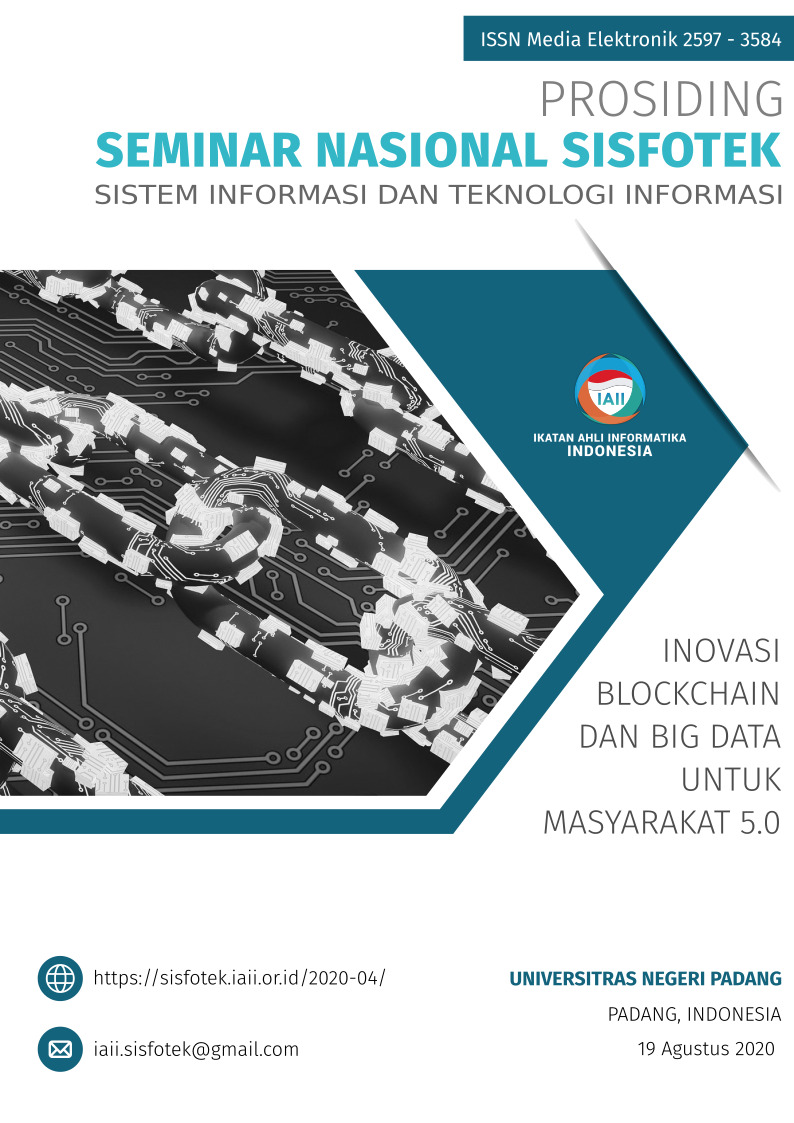Pengukuran Efektifitas Implementasi ERP-SAP Pada Industri Teh Di PTPN IV
Keywords:
ERP, SAP, system implementation, DeLone and Mc Lean model.Abstract
Tea industry in West Sumatra and Jambi is under the auspices of PTPN VI which has a head office in Jambi City and has two production units namely Kayu Aro and Danau Kembar. Since 2018 PTPN VI has used one of the SAP software for the integration of its corporate information systems. This study aims to explore how the conditions of ERP implementation in PTPN VI, especially the tea industry which includes business processes, implementation stages, implementation constraints and how big the size of ERP implementation success in PTPN VI. The study was conducted at PTPN VI Headquarters and in both tea production units using interview techniques and questionnaire media to measure the success of implementation by developing the DeLone and McLean model that was processed with the Structural Equation Modeling approach. Measuring the success of implementation shows that the implementation was quite successful where information quality, system quality and service quality affect the level of usage and customer satisfaction which ultimately results in net benefits received.
References
“Industry 4.0: The Future of Productivity and Growth in Manufacturing Industries.” https://www.bcg.com/publications/2015/engineered_products_project_business_industry_4_future_productivity_growth_manufacturing_industries (accessed Jul. 29, 2020).
A. Gilchrist, “Introduction to the Industrial Internet,” in Industry 4.0, Apress, 2016, pp. 1–12.
A. Leon, ERP Demystified. 2008.
W. H. DeLone and E. R. McLean, “Information systems success: The quest for the dependent variable,” Inf. Syst. Res., vol. 3, no. 1, pp. 60–95, 1992, doi: 10.1287/isre.3.1.60.
S. Edlund and A. Lövquist, “The Role of System Administrators in Information Systems Success,” 2012.
Z. Zhang, M. K. O. Lee, P. Huang, L. Zhang, and X. Huang, “A framework of ERP systems implementation success in China: An empirical study,” Int. J. Prod. Econ., vol. 98, no. 1, pp. 56–80, 2005, doi: 10.1016/j.ijpe.2004.09.004.
A. Hawari and R. Heeks, “Explaining ERP failure in a developing country: A Jordanian case study,” J. Enterp. Inf. Manag., vol. 23, no. 2, pp. 135–160, 2010, doi: 10.1108/17410391011019741.
W. H. D. A. E. R. MCLEAN and WILLIAM, “The DeLone and McLean Model of Information Systems Success: A Ten-Year Update,” J. Manag. Inf. Syst., vol. 19, no. 4, pp. 9–30, 2003, doi: 10.1016/j.giq.2003.08.002.
Y. M. W. Jen_Her Wu, “Measuring ERP success: The key-users’ viewpoint of the ERP to produce a viable IS in the organization,” Comput. Human Behav., vol. 23, no. 3, pp. 1582–1596, 2007, [Online]. Available: doi: 10.1016/j.chb.2005.07.005.
R. Stockdale, Revisiting the content, context and process of IS evaluation. Evaluating Information Systems, 2008.
Imam Ghozali, Model persamaan struktural: Konsep dan aplikasi dengan program AMOS 16.0. Semarang: Badan Penerbit Universitas Diponegoro, 2008.
wartaekonomi, “PTPN III Holding Implementasikan ERP Guna Dukung Transformasi Bisnis,” warta ekonomi, Surabaya, 2016.
Downloads
Published
How to Cite
Issue
Section
License
Copyright (c) 2020 Prosiding SISFOTEK

This work is licensed under a Creative Commons Attribution 4.0 International License.
http://creativecommons.org/licenses/by/4.0







